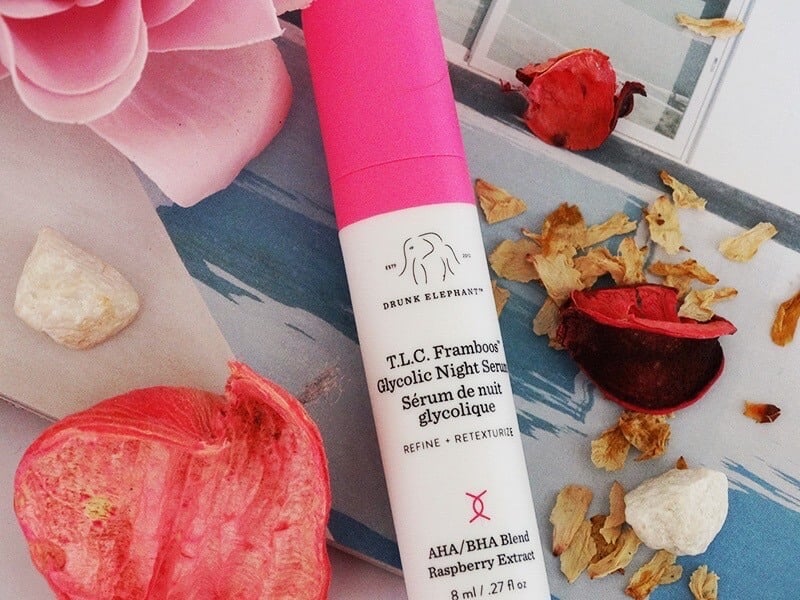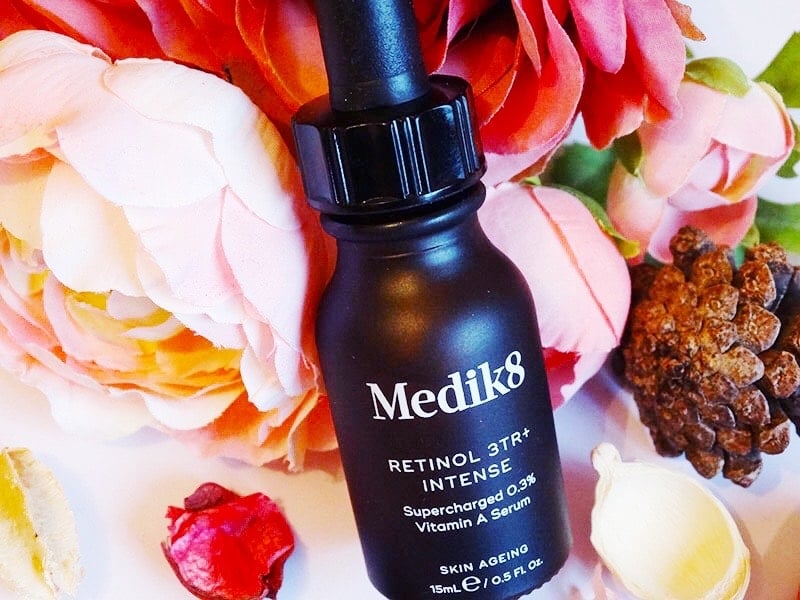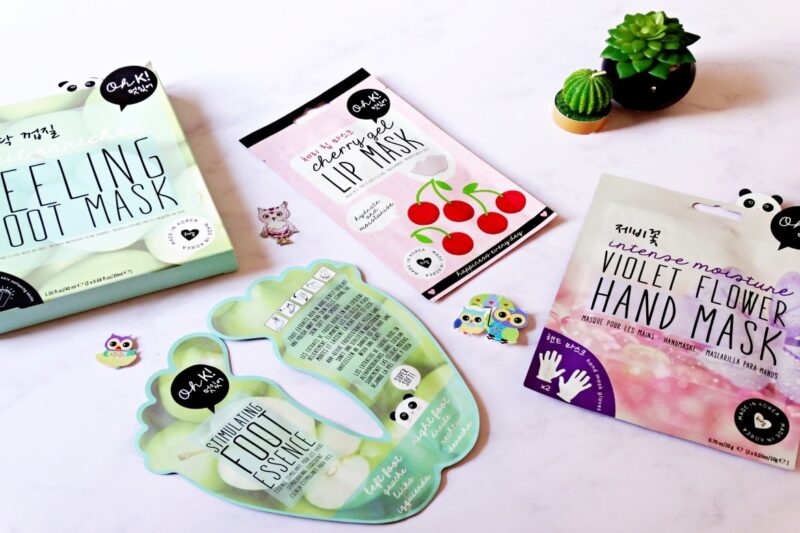Call me boring, but I love routines.
It’s the Virgo in me. We’re the organizers of the Zodiac. Spontaneity is all well and good, but when I have to get stuff done, it pays to have a system in place.
That’s why I have systems, or routines, for everything. For getting ready in the morning. For blogging. For skincare.
That last one was tricky. Once upon a time, there was only cleansing, toning (which I happily skipped) and moisturizing. Now we have serums, exfoliants, sheet masks, clay masks, essences…
How the heck are you supposed to make sense of it all and create a skincare routine that works for you?
The first step is figuring out what your skin is dealing with. Then, it’s just a matter of finding out the right products to take care of them (and nope, you don’t need 100 of them):
Step 1: Know your skin type
You can’t go skincare shopping if you don’t know what your skin type is. How will you even know what to look for?
Sure, there are products that work for all skin types, like a lightweight antioxidant serum. But if you’re after a moisturizer? A lightweight one won’t do for dry skin. And a rich one will cover oily skin in pimples (like that didn’t happen enough on its own already).
Different skin types have different needs and you’d better get familiar with them before handing out your hard earned cash to the cashier at Sephora. You don’t wanna go home with something that’ll do some harm to your skin.
There are 5 basic skin types:
- Combination: dry cheeks and oily t-zone
- Dry: tight and flaky
- Normal: flawless
- Oily: shiny and prone to breakouts
- Sensitive: easily irritated
This is just a brief overview. I don’t want to write a poem here (this post is long enough already), so if you don’t know what your skin type here, check out my quick guide on how to identify it.
Related: How To Identify Your Skin Type (+ Free Quiz)
Ready to hit the stores? Let’s go shopping, baby!
Want to get the most out of your skincare products? Click on the image below to subscribe to my newsletter and receive the “How To Combine Actives Like A Pro” cheatsheet.Want to get the most out of your skincare products? Click on the image below to subscribe to my newsletter and receive the “How To Combine Actives Like A Pro” cheatsheet.
Step 2: Basic skincare routine
Morning
1. Cleanser: If you don’t cleanse your skin, there’s no point doing anything else. All those impurities on its surface will just make it harder for skincare products to get through. Pick one that does the job well but gently. If it leaves your skin feeling tight, it’s too harsh for you.
Related: How To Choose The Right Cleanser For Your Skin Type
2. Vitamin C Serum: Vitamin C is a powerful antioxidant that fights free radicals, boosts collagen, and brightens the skin tone. When used together with its BBFs Vitamin E and Ferulic Acid, it also enhances the sun protection of your sunscreen. Layer it underneath and you immediately up your antiaging game.
Related: The Best Vitamin C Serums With Vitamin E And Ferulic Acid
3. Moisturizer: Hydrated skin is healthy skin, so let’s seal that moisture in with a good moisturizer. If you have dry skin, you’ll love rich and oil-based moisturizers. They nourish skin and get rid of flaky patches. Oily skin? An oil-free formula will work much better for you. It hydrates your skin without adding even more oil to it. Or you may skip moisturiser altogether. For your skin type, sunscreen alone is often enough.
Related: The Best Moisturisers For Oily Skin
4. Sunscreen: This is the best anti-aging product you can use, bar none. UV rays are to blame for 90% of premature wrinkles and dark spots, so pile on that sunscreen every day. Yes, in winter, too. UV rays are nasty little buggers that can penetrate through clouds and get reflected on snow. I love mineral sunscreens because they’re gentler on the skin and don’t cause irritations or allergies.
Related: My Fave Mineral Sunscreens

Night
Your evening skincare routine is similar to your morning skincare routine. You cleanse and moisturise, but skip sunscreen. Instead, three nights a week, you exfoliate right after cleansing.
Exfoliation gets rid of those dead cells that are comfortably sitting on the surface of the skin. It’s the fastest way to make your skin softer and brighter. Plus, it helps prevent blemishes too. But what exfoliant should you use?
- Oily skin: Opt for a salicylic acid based exfoliant. It can get into your pores and unclog them from within.
- Dry skin: Glycolic acid works better for you. It’s hydrating and plumps up your skin to boot.
- Sensitive skin: You need lactic acid. It’s as gentle as it’s hydrating.
Related: Glycolic Acid VS Salicylic Acid: Which One Is Right For You?

Step 3: Advanced Skincare Routine
When you’re young, you don’t really have to do much to keep your skin beautiful and glowy.
But, as you get older, your skin changes. It gets drier. It develops wrinkles. Dark spots may start to show up too. And then there’s acne. You can get that at any age.
If your skin has special needs, it needs some extra tender loving care:
Acne treatment: Benzoyl Peroxide is the gold standard for treating acne. It can kill the bacteria that cause it and soothes the redness to boot. But, it’s quite harsh, so use it carefully. P.S. If it doesn’t work, go to a doctor. You need something stronger that only she can prescribe.
Related: Everything You Ever Wanted To Know About Benzoyl Peroxide
Anti-aging treatment: Your mid 20s are a great time to introduce retinol into your skincare routine. It’s a form of vitamin A that boosts collagen production, so it can prevent sagging and treat wrinkles. While it’s at it, it also fights free radicals and speeds up the skin’s exfoliating process. Use it only 3 nights a week, alternating it with exfoliation. P.S. Retinol can irritate skin when you first start using it. Begin with the smallest dose you can find and slowly work your way up.
Related: 5 Anti-Aging Superstars You Need To Add To Your Skincare Routine
Skin lightening treatment: These work by inhibiting the production of melanin. There are plenty of different ways to lighten dark spots and melasma and a lot of them can bust wrinkles, too!
Related: 7 Ways To Treat Hyperpigmentation

Step 4: Products You Don’t Need (But May Want To Add Anyway)
You know how everyone tells you you HAVE TO use a toner or eye cream? You totally DON’T. Lots of skincare products aren’t really that necessary. Sure, you can use them, but make sure you’re getting your money’s worth before splurging on them:
Toner:I don’t really see the point of using a toner. To remove the impurities your cleanser leaves behind? Get a better cleanser. To rebalance skin’s ph? Skin does that on its own within minutes. Seriously, using a toner makes sense only when it’s loaded with hydrating and antioxidant goodies. And even then, only when you’re not getting enough from your other must-have skincare products. Example? If you have oily skin, your oil-free moisturizer will give you all the hydration it needs. Dry skin? Your moisturizer may need a hydrating toner’s helping hand.
Related: Is Toner Really Necessary?
Eye cream: Did you know that the ingredients in your moisturizer and eye cream are the same? Yep, really. So, why are you paying more for a smaller jar? The exception? When your face is oily and your undereye area is dry or vice versa. Different skin types have different needs, so it makes sense to use separate products. Otherwise, stick to your fave facial moisturizer. Just make sure it’s fragrance-free.
Related: Why I Don’t Use An Eye Cream (And You Shouldn’t Either)
Scrubs: Still sticking to scrubs? Switch to an AHA or BHA exfoliant ASAP. They’re gentler on the skin, exfoliate it better and have plenty of other benefits to boot. Really, there is no reason to still use a scrub. None.
Related: Why Chemical Exfoliants Are Better Than Scrubs
Masks: Sheet masks, hydrating masks, clay masks, sleeping masks… There are all kinds of masks available today. These are great for a quick pick-me-up, but there’s no need to use them regularly. I use a sheet mask every week cos I enjoy it, but other masks only when my skin needs the extra help.
Related: How To Choose The Best Mask For Your Skin Type
What’s your skincare routine like?


I feel like my skin is probably combination, but I tend to go for “normal” or “sensitive” and those work well for me. It’s kind of hard to tell what’s right sometimes!
Trisha, combination skin is quite tricky to care for. The best thing would be to use products for oily skin on oily areas and those for dry skin on dry areas. But if those for normal or sensitive skin work best for you, great. The important thing is to know what ingredients to use. Labels can be misleading sometimes. 🙂
I really need to refine my skincare routine, just as a blogger I always want to try new things! I prefer to exfoliate at night as it can leave my skin a bit red [and it saves time allowing me to sleep longer in the morning], is there any major benefit to doing it in the morning?
Katie, not really. In fact, some experts recommend doing it at night, as that way there is less chance that you will sweat the exfoliant off. Just do it when it is most convenient for you. But if the exfoliant leaves your skin red, it may be its concentration is a bit too strong for your skin. Try using a lower one and see how that goes. 🙂
Totally agree with you on alcohol-based toners so I don’t buy them. There is one that I do use because it is alcohol-free. It is by a brand called Thayers. http://www.amazon.com/Thayers-Alcohol-free-Unscented-Witch-12-oz/dp/B0045PCAI6/ref=sr_1_8_s_it?s=beauty&ie=UTF8&qid=1457766353&sr=1-8&keywords=witch+hazel
H, I’m not much of a fan of witch hazel because it’s distilled with alcohol, too. But if it isn’t drying out your skin, it should be fine. 🙂
Oh! I didn’t know that. I guess foe every once in awhile it should still be fine though. I don’t usually buy it.
If it has never irritated your skin, I guess it’s fine. But, I’d use it in moderation.
I have been taking you seriously until you brought your horoscope into it. Very diappointing for someone who I thought believed in science and not that pseudo science nonsense.
Ann Marie, are you serious? I have been talking about skincare from a scientific perspective for 9 years now. Every claim I make is backed up by a study. And because I mention I am a Virgo, all of a sudden that counts for nothing?!
I don’t believe in horoscopes. I don’t read mine every morning or consult an astrologist before making any decision. I just wanted to talk about routines and, as I happen to be a Virgo (a sign known for its love of routine), I thought it’d make a fun introduction.
This blog is science-based but its target audience is the laywoman who wants to use what works but doesn’t know how to decipher scientific studies on her own (cos science can be quite complicated!). Bringing in a touch of pop culture (or astrology in this case) may just be what they need to get hooked and keep reading.
Hi Gio,
I have normal to dry combination skin and acne.
I bought the Ordinary Lactic acid 10%+HA for exfoliation but how do I use it? Should I wash it off the skin and how long should I leave it on? Should I put on straight after putting on the lactic acid?
I am starting a new routine that goes:
Simple micellar gel wash (AM &PM)
CeraVe moisturising cream (AM & PM)
Suncream (AM)
The Ordinary lactic acid 10%+HA (PM 3 times a week)
Also the Simple gel wash has citric acid in it- can I layer this with the lactic acid (ie: by cleansing first with this wash then applying the lactic acid)?
Thank you so much 🙂
The third question should say : “should I put on moisturiser straight after putting on the lactic acid?”*
Lu, wash your face, put on lactic acid and, once absorbed, apply moisturiser. No need to rinse off lactic acid (unless it irritates your skin, of course!)